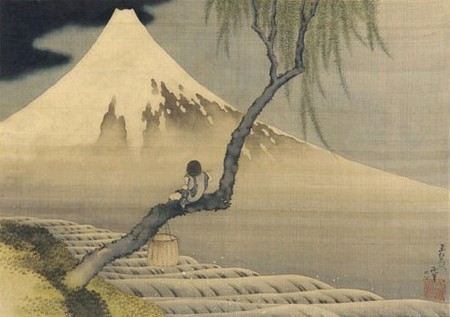
Boy Viewing Mount Fuji, Katsushika Hokusa
By James Dacey
At their foundations, physics and art are connected by form. This was the underlying message of a talk by Jack Leibowitz, a condensed matter researcher at the Catholic University of America. He was speaking today at the annual meeting of the American Association for the Advancement of Science (AAAS), which I’m currently at in San Diego, California.
Leibowitz draws an unlikely comparison between the electromagnetic equations of James Clark Maxwell and the Boy Viewing Mount Fuji, a painting by Katsushika Hokusa. The Japanese artist is perhaps better known for his work The Great Wave off Kanagawa, which decorates the living room of just about every student flat in the land.
In is talk, Leibowitz gave the standard eulogy about the irresistible simplicity of Maxwell’s equations, but he compared this with the same appreciation of design that rewards the viewer of Hokusai’s great painting. “We see the powerfully rendered apposition of shapes: the peak of Mount Fuji accentuated by placement of the dark cloud right behind it, which takes the eye to the darkest dark and the lightest light,” he said.
This was certainly high-brow stuff! Actually, if I’m being completely honest, the talk fell a little bit flat on the audience here in San Diego. Leibowitz came across as a bit aloof in his presentation style, and the formality appeared to leave the non-specialist audience despondent – not a single question was asked when things were opened up to the floor. It’s a shame because it seems like a really fascinating topic, so, if interested, I would skip the talks and pick Leibowitz’s book – Hidden Harmony: The Connected worlds of Physics and Art.



